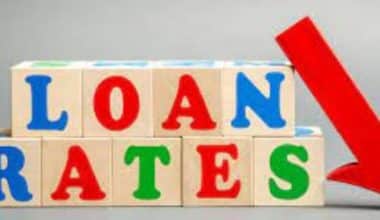As a business owner, you understand the importance of investing in new growth opportunities. However, you may not always have the funds to make these investments. Small business financing can be a lifesaver in this situation. And, if you’re looking for a loan, you’ve probably considered term loans. But, before committing to this type of loan, it is crucial to understand what it is and how it differs from other available options.
What Exactly Is a Term Loan?
A term loan gives borrowers a lump sum of money upfront in exchange for specific borrowing terms. Term loans are typically intended for well-established small businesses with stable financial statements. The borrower agrees to a specific repayment schedule with a fixed or floating interest rate in exchange for a specified amount of cash. Term loans may require significant down payments to reduce payment amounts and the total cost of the loan.
How Term Loans Work
Term loans are frequently granted to small businesses needing funds to purchase equipment, a new building for their manufacturing processes, or any other fixed assets to keep their operations running. Some companies borrow the funds they require to operate every month. Many banks have created term loan programs to assist companies in this manner.
Business owners apply for term loans in the same way they would apply for any other credit facility—by contacting their lender. They must provide statements and further financial proof of their creditworthiness.
Borrowers who are approved receive a lump sum of money and are required to make payments over a set period, usually on a monthly or quarterly basis.
Term loans have a set maturity date and a fixed or variable interest rate. If the proceeds are used to purchase an asset, the useful life of that asset may impact the repayment schedule. The loan requires collateral and a rigorous approval process to reduce the risk of default or failure to make payments. As previously stated, some lenders may require down payments before advancing the loan.
Borrowers frequently choose term loans for a variety of reasons, including:
- Easy application procedure
- Receiving a cash payment in advance
- Specified payments
- Reduced interest rates
A term loan also frees up cash from a company’s cash flow to be used elsewhere.
Types of Term Loans
If you decide on a term loan, you can apply for short-term, intermediate-term, or long-term.
Short Term Loans
These are loans for smaller amounts with shorter repayment periods – usually one or two years.
Short-term loans are ideal for covering day-to-day working capital costs. However, because these loans are more convenient and easier to obtain, you can expect to pay higher interest rates.
Intermediate-Term Loans
Intermediate-term loans fall somewhere between short- and long-term loans. Repayment terms are typically two to five years, with a maximum loan amount of $500,000.
These loans are a good option for businesses looking to expand or open a new location. This type of funding can assist you in increasing your business operations and starting to generate more revenue.
Long-term Loans
Long-term loans have the highest loan amounts and the most extended repayment terms. You can obtain funding in the millions of dollars, with repayment terms of up to 25 years.
A long-term loan is a good option for a well-established company with good credit and a solid financial history. You could use one to fund long-term growth strategies for your company.
Term Loan Example
A 7(a) guaranteed loan from the Small Business Administration (SBA) encourages long-term financing. Short-term loans and revolving credit lines can assist a company’s cyclical and immediate working capital needs.
Long-term loan maturities vary depending on the borrower’s ability to repay, the loan’s purpose, and the financed asset’s useful life. Maximum maturity dates for real estate are typically 25 years, up to ten years for working capital, and ten years for most other loans. The borrower makes monthly principal and interest payments to repay the loan.
An SBA fixed-rate loan payment is the same as any other payment because the interest rate is fixed. In contrast, the payment amount on a variable-rate loan can change as the interest rate changes. During a company’s startup or expansion phase, a lender may establish an SBA loan with interest-only payments. As a result, the company has more time to generate revenue before making full loan payments. The majority of SBA loans do not permit balloon payments.
The SBA charges a prepayment fee to the borrower only if the loan has a maturity of 15 years or more. Every loan is secured by business and personal assets until the recovery value equals the loan amount or the borrower has pledged all reasonably available assets.
What Are the Advantages and Disadvantages of Term Loans?
Term loans, like all financing options, have advantages and disadvantages that must be considered before deciding.
Pros
- They can meet short-term financing requirements. A term loan can be a good option if you need to buy new assets or equipment for your business. You can use the opportunity to expand your operations, and the revenue you generate will help you repay the loan.
- They typically have lower rates. Term loans usually have low interest rates and flexible repayment terms. You can repay the loan over time without it becoming an undue financial burden on your company.
- They assist you in establishing business credit. A term loan can be a great way to build your small business credit if you make your monthly payments on time.
Cons
- They are relatively difficult to obtain. Term loans are typically more difficult to qualify for than other types of loans due to their favorable interest rates and repayment terms. You must have an excellent credit history and provide your lender with detailed financial information.
- Some lenders will insist on collateral. If your lender views your company as a financial risk, they may require you to put up collateral. This is referred to as a secured loan, and if you are unable to repay it, your personal or business assets will be at risk.
- They may levy additional charges. For term loans, some lenders charge additional fees, such as origination fees. Depending on the lender, you may even be charged a prepayment penalty if you pay off the loan early.
Why Do Companies Take Out Term Loans?
A term loan is typically used to finance equipment, real estate, or working capital over a period of one to 25 years. A term loan is frequently used by a small business to purchase fixed assets, such as equipment or a new building, for its manufacturing process. Some businesses borrow money to get by from month to month. Many banks have created term-loan programs specifically to assist businesses in this manner.
What Are the Different Kinds of Term Loans?
Term loans are available in a variety of lengths, which usually correspond to the loan’s lifespan. A short-term loan is typically offered to businesses that do not qualify for a line of credit and lasts less than a year, though it can also refer to a loan of up to 18 months.
An intermediate-term loan typically lasts one to three years and is repaid in monthly installments from the company’s cash flow. A long-term loan has a term of three to 25 years, is secured by company assets, and requires monthly or quarterly payments from profits or cash flow.
What Are the Most Common Characteristics of Term Loans?
Term loans have a set maturity date, a fixed or variable interest rate, and a monthly or quarterly repayment schedule. If the loan is used to finance the purchase of an asset, the useful life of that asset may have an impact on the repayment schedule. To reduce the risk of default or failure to make payments, the loan requires collateral and a rigorous approval process. However, if a term loan is paid off ahead of schedule, there are usually no penalties.
When Should You Consider a Term Loan?
If you’re looking for startup funding, you have a lot of options. So, how do you know if a term loan is better for your company than, say, a revolving line of credit?
A term loan is a good option for a short-term project or expense. A term loan, for example, can help you cover the cost of purchasing inventory or investing in a marketing campaign.
Term loans are best suited for well-established businesses with a track record of financial success. If you have bad credit or little business experience, getting a term loan may be difficult.
Finally, term loans are ideal for businesses that do not require funds right away. Applying for a term loan can be time-consuming, especially if you want to take advantage of the low interest rates offered by a bank or credit union. So, if you need cash quickly, a term loan may not be the best option.
How to Get a Term Loan
The following are the steps you must take when applying for a term loan:
#1. Organize Your Paperwork
Before applying for the loan, you should organize your financial records. The specific requirements vary by lender, but here’s an overview of what you should expect to provide:
- Employer identification number (EIN)
- Personal and business credit history
- Business tax returns
- Bank statements
- Profit and loss statement
- Income statement
#2. Apply to Several Lenders
When applying for a term loan, always keep the total cost of the loan in mind. If the interest rates are excessively high and you do not generate a lot of extra revenue from your investment, you may find yourself in debt. Applying with several lenders allows you to compare interest rates and repayment terms to find the most affordable loan for your business.
Many lenders will preapprove you for a loan with just a soft credit inquiry, so you don’t have to worry about your credit score being harmed. You can also use a lending marketplace to apply and receive multiple offers with just one application.
#3. Evaluate Your Options
Once you’ve received offers from several lenders, weigh them all. Choosing the lender with the highest loan amount may be tempting, but there are a few other factors to consider.
Keep an eye out for the annual percentage rate (APR), which will tell you how much it will cost you to borrow the money. You should also consider the repayment terms, as they will have a significant impact on your ability to repay the loan.
It is also critical to pay close attention to any fees charged by the lender. It’s easy to overlook fees if the loan has a low interest rate and flexible repayment terms, but they can add thousands of dollars to the cost over the life of the loan. Here are some significant fees to be aware of:
- Origination fees: These are the fees you will pay the lender up front to process the loan. These fees range between 1% and 5% of the loan amount.
- Prepayment penalty: Some lenders charge a penalty fee because the lender loses out on future interest payments if you pay off the loan early.
- Late fee: As with most monthly costs, you will be charged a late fee if you pay late.
- Processing fee: A processing fee is charged to cover the cost of underwriting the loan.
#4. Complete the Loan
You’re ready to close on the loan and receive the funds once you’ve chosen a lender and agreed to the terms. You may receive the funds within a day or two of the closing, depending on the lender.
Related Articles
- LOAN TERM: Definition, Types and How It Works
- LONG TERM BUSINESS LOAN: How To Get One
- HOW DO LOANS WORK For a Car or House (Detailed Guide)






